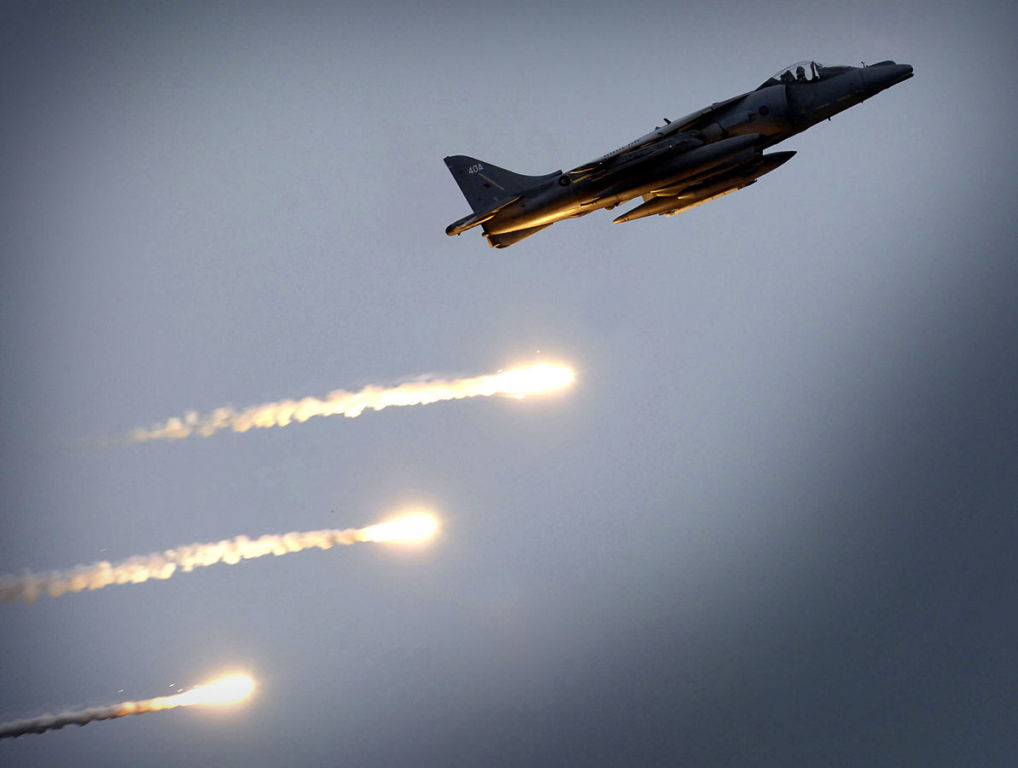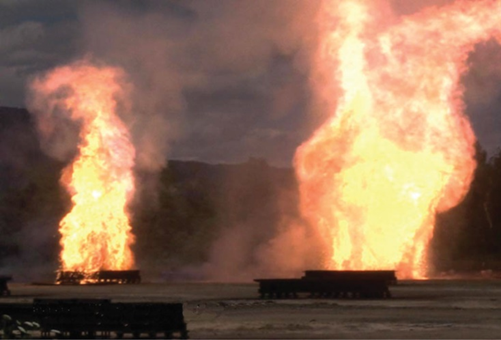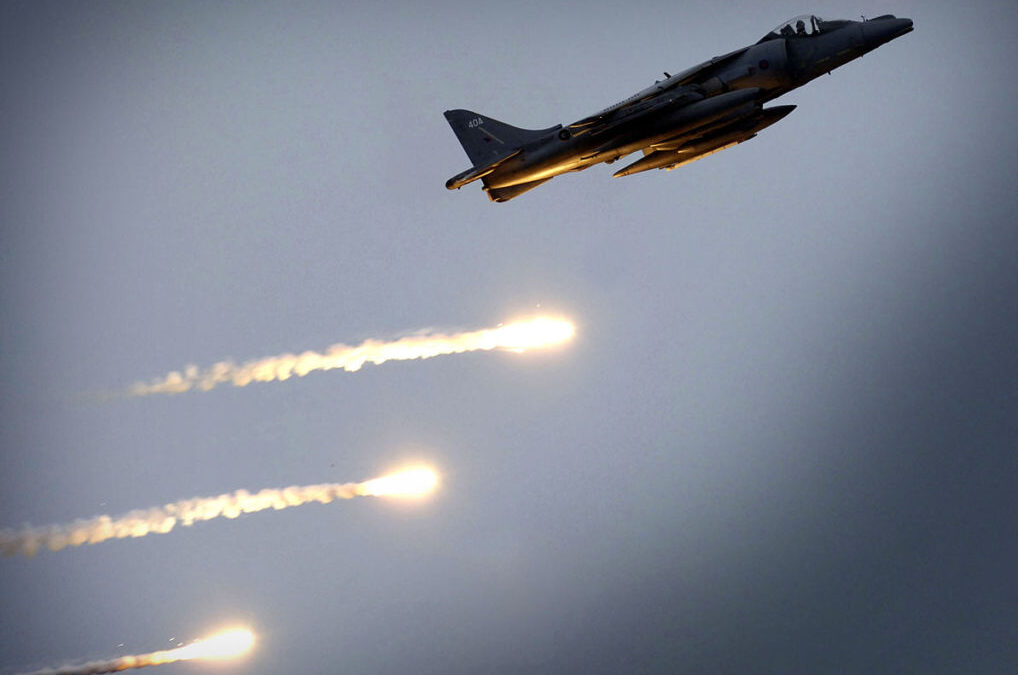
Pyrotechnic compositions of magnesium/Teflon/Viton (MTV) are widely used in military flares and for igniting the solid propellant of a rocket motor, and are comprised of as much as 45% PFAS. The demilitarization of excess, obsolete, or unserviceable flares and other energetic waste currently relies on open burning and open detonation (OB/OD) – a practice that produces an ongoing uncontrolled release of PFAS and other toxic chemicals to the environment. Across the U.S., hundreds of communities and thousands of on-base personnel and service members have felt the adverse effects of these toxic pollutants, including PFAS.
HOW TO HELP: Co-sign the national letter to EPA, click HERE
What are PFAS?
Per- and polyfluoroalkyl substances (PFAS) are a group of man-made chemicals that includes PFOA, PFOS, GenX, and many other chemicals. PFAS are used to make fluoropolymer coatings and products that resist heat, oil, stains, grease, and water. The best-known fluoropolymer is polytetrafluoroethylene or Teflon.
Why do some munitions contain significant PFAS?
PFAS are added to improve the performance and stability of certain military explosives and munitions. Infrared countermeasure flares are designed to protect rotary- and fixed-wing aircraft from infrared guided (heat seeking) missiles. Pyrotechnic compositions of magnesium/Teflon/Viton (MTV) are widely used in military flares and for igniting the solid propellant of a rocket motor. Often referred to as “decoy” flares, countermeasure flares are comprised of as much as 45% PFAS (fluoropolymers).
What happens to PFAS when subjected to open air burning or detonation?
PFAS are not destroyed in an open fire or open detonation and therefore are dispersed to the air and the surrounding environment where they accumulate in people, as well as fish and wildlife.
What health risks are associated with exposure to PFAS?
PFAS have been shown to affect growth and development, reproduction, thyroid function, the immune system, injure the liver and increase risk for certain cancers.
Where is open air burning/detonation of munitions occurring in the U.S. and its territories?
The demilitarization of excess, obsolete, or unserviceable flares and other energetic hazardous waste currently relies on open burning and open detonation (OB/OD). Nationwide, there are approximately 60 active private and public sector facilities that routinely conduct OB/OD of solid and hazardous waste, including flares.
 There are literally hundreds of former (legacy) OB/OD sites across the U.S. that now require cleanup. In addition to widespread environmental damage, community members, base workers and service members have endured chronic exposure to toxic metals, dioxins, perchlorates, explosives, solvents, depleted uranium and PFAS.
There are literally hundreds of former (legacy) OB/OD sites across the U.S. that now require cleanup. In addition to widespread environmental damage, community members, base workers and service members have endured chronic exposure to toxic metals, dioxins, perchlorates, explosives, solvents, depleted uranium and PFAS.
For example, at Indiana’s Crane Naval Surface Warfare Center, state regulators – with concurrence from the U.S. EPA – have issued permits allowing the 62,000-acre facility to open air burn and detonate certain energetic items that may contain PFAS. Altogether, there are at least 12 areas where OB/OD is permitted.
At the East End Burn Area, open air burning of “flare/smoke/ignition” material is permitted, including countermeasure (decoy) flares containing as much as 45% PFAS. At this unit alone, the permitted limit for open burning is 400 pounds per day (measured as net explosive weight).
As PFAS remain unregulated in Indiana, state officials said that they do not have information on quantities of PFAS treated at Crane via incineration or open burning/open detonation or whether they have been treated at all.
Do all OB/OD facilities in the U.S. have a permit?
No. Today, at least nine major sites are operating without an enforceable hazardous waste permit. These “interim status” sites have no limits on the types or quantities of wastes that may be treated by OB/OD, including PFAS.
The Naval Surface Warfare Center-Indian Head (located on the Potomac River in Maryland) for example, has conducted OB/OD for decades without a hazardous waste (RCRA) permit. EPA officials confirm that there are no enforceable permit conditions restricting the amount or type of munitions treated by OB/OD, including flares.
However, according to the Navy’s 1996 permit application, Indian Head has the capacity to open burn 9,000 pounds per 8-hour period or as much as 9,450,000 pounds of hazardous waste per year.
Why is OB/OD of hazardous waste still permitted?
The answer is complex but the short answer is this: Congress made open air burning of hazardous waste illegal in the 1980s and since that time, the U.S. EPA has not enforced that law. Additionally, although PFAS are not yet listed hazardous wastes, the U.S. EPA has the statutory ability to ban routine OB/OD of PFAS munitions.
 For decades, the U.S. EPA has permitted the Clean Harbors Colfax facility in Louisiana to open burn and detonate more than 500,000 pounds of toxic waste each year – including aerial flares.
For decades, the U.S. EPA has permitted the Clean Harbors Colfax facility in Louisiana to open burn and detonate more than 500,000 pounds of toxic waste each year – including aerial flares.
Are PFAS flares still being manufactured?
Yes. As recently as March 2021, the U.S. Department of Defense awarded two major manufacturing contracts totaling $500 million for “indefinite-delivery/indefinite-quantity” for magnesium Teflon Viton countermeasure flares to protect against infrared missiles.
What is the solution?
EPA’s current strategy is to issue even more permits which only perpetuates this devastating practice. EPA and Congress must immediately BAN routine open air burning and detonation of hazardous waste in the U.S. and its territories in favor of safer advanced technologies.
HOW TO HELP: Co-sign the national letter to EPA, click HERE
Complete URL for letter:
https://docs.google.com/forms/d/e/1FAIpQLSfCUuW0299hBuUe4V-CGcaq_kuZDap53QU3FrZE0gyJAgsY-A/viewform
PRINT as one-page fact sheet:
Demilitarization of Military Flares as an Uncontrolled Source of PFAS CSWAB Sept 2021
REFERENCES:
Documents are downloaded on our PFAS Library under the heading “PFAS in Munitions Explosives” https://cswab.org/pfas/pfas-library/

